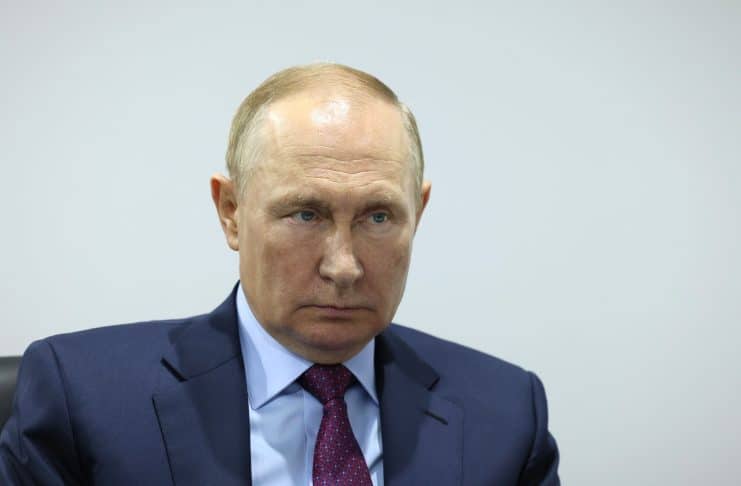ANALYSIS – Satellite imagery suggests Russia may again be preparing to test an experimental nuclear-powered cruise missile with a theoretical intercontinental range of 14,000 miles.
The ‘unique' strategic weapon, called Burevestnik – likely armed with a nuclear warhead – could also potentially stay aloft indefinitely.
Due to its extremely long range, the missile, powered after launch by a miniature nuclear reactor, could also be based anywhere in Russia and still be able to reach targets in the continental United States.
And because of its nuclear propulsion it can fly at treetop level, an altitude of 160 to 320 feet, throughout almost all its flight.
This extremely low-altitude flight path would minimize radar detection while also allowing the weapon to use circuitous routing to avoid known air-defense locations.
Russia previously conducted 13 known tests of the missile, also known by NATO as the SSC-X-9 Skyfall, between 2017 and 2019, all of which were unsuccessful, according to a report from the Nuclear Threat Initiative (NTI), a nonprofit group.
And accidents can be deadly.
A missile launched in 2019 crashed and later exploded during a recovery attempt, killing seven people, according to U.S. officials.
“It is exotic — it is dangerous in its testing and development phase,” said Daryl G. Kimball, executive director of the Arms Control Association.
graphic
The missile is dangerous even without a nuclear warhead since it could release radioactive contamination from the reactor if it were to explode or malfunction during a test launch and flight.
According to a New York Times visual analysis, recent movements of aircraft and vehicles at and near a base in Russia's remote Arctic region are consistent with the same preparations that were made for tests of the missile in 2017 and 2018.
Heightened activity has been observed on the New Siberian Islands, particularly at the Pankovo test site, believed to be linked to the Burevestnik tests.
U.S. surveillance planes, including RC-135W Rivet Joint reconnaissance aircraft, have also been tracked in the area over the last two weeks, and aviation alerts have warned pilots to avoid nearby airspace.
The New York Times reported:
According to the Nuclear Threat Initiative report, the missile is a “second-strike, strategic-range weapon,” intended to be launched after a wave of nuclear strikes have devastated targets in Russia. The missile could carry a conventional warhead but, in practice, would likely carry a nuclear payload, albeit a smaller one than most other nuclear-capable weapons. If used in wartime, the missile could have the potential to destroy large urban areas and military targets, experts say.
While Russia has shared little about the Burevestnik's specific design, President Vladimir V. Putin has said it is nuclear-powered. The missile is thought to be launched by a solid-fuel rocket motor before a small nuclear reactor activates in flight, theoretically allowing the missile to stay aloft indefinitely.
The White House declined to comment on The Times's findings.
Army Recognition.com adds that:
This development is part of a larger weapons program unveiled by Russian President Vladimir Putin in March 2018, which includes the hypersonic Kinjal missile, the nuclear-powered Poseidon torpedo system, and the 9M730 Burevestnik missile. It's important to note that the Burevestnik project shares similarities with a concept explored by the United States almost six decades ago under the “Pluton” program. However, the American initiative was eventually abandoned due to significant financial investments and formidable technical challenges.
According to a recent publicly available report titled Focus 2023 published by Norwegian military intelligence on January 27, 2023, Russia is committed to continuing the development of the nuclear-powered Poseidon torpedo system, one of the six weapons introduced by Putin, along with the 9M730 Burevestnik. The report anticipates “further tests on the New Siberian Islands” and estimates that several more years of development will be necessary before these systems become fully operational.
The opinions expressed in this article are those of the author and do not necessarily reflect the positions of American Liberty News.



Why shouldn’t Russia work on this – China does and China is far more dangerous and is strategically establishing itself in Africa and Saudi Arabia and elsewhere and hoping to build railways across all the continents – you think they would hesitate to use their nuclear subs to control the China Sea ? Russia is not the threat on land or sea they like us lack the manpower China and N.Korea would gladly send to die in war if they wished.
This is about the 8th or 9th year of testing.